Institute leads cutting-edge biomedical research in Africa, for Africa
Wilma Stassen

Dr Doty Ojwach’s enthusiasm for all things biology is second to only one other passion: alleviating the burden of disease among Africa’s women and children. | Illustration by Roulé le Roux
An investigator tracking the path of COVID-19, a scientist deciphering the body’s own armour against antimicrobial resistance, and an immunologist studying the placentas of pregnant women for clues that can explain preterm births. These are but three of the African scientists at Stellenbosch University (SU) who are contributing to research for impact in Africa, and the world at large.
Lucious Chabuka, Ewura-Esi Manful, and Dr Doty Ojwach are part of a growing cohort of SU students and researchers from African countries who are breaking new ground to find solutions to global medical and healthcare challenges.
Increasingly, African medical and health sciences research is playing a central role on the world’s scientific stage. SU’s Faculty of Medicine and Health Sciences (FMHS) is harnessing cutting-edge science to tackle some of Africa’s most pressing health issues, with benefits for the entire globe.
A shining example is the efforts by FMHS researchers in the new Biomedical Research Institute (BMRI) who are involved in sophisticated genomic surveillance aimed at keeping one step ahead of disease outbreaks with effective tests, treatments, and vaccines.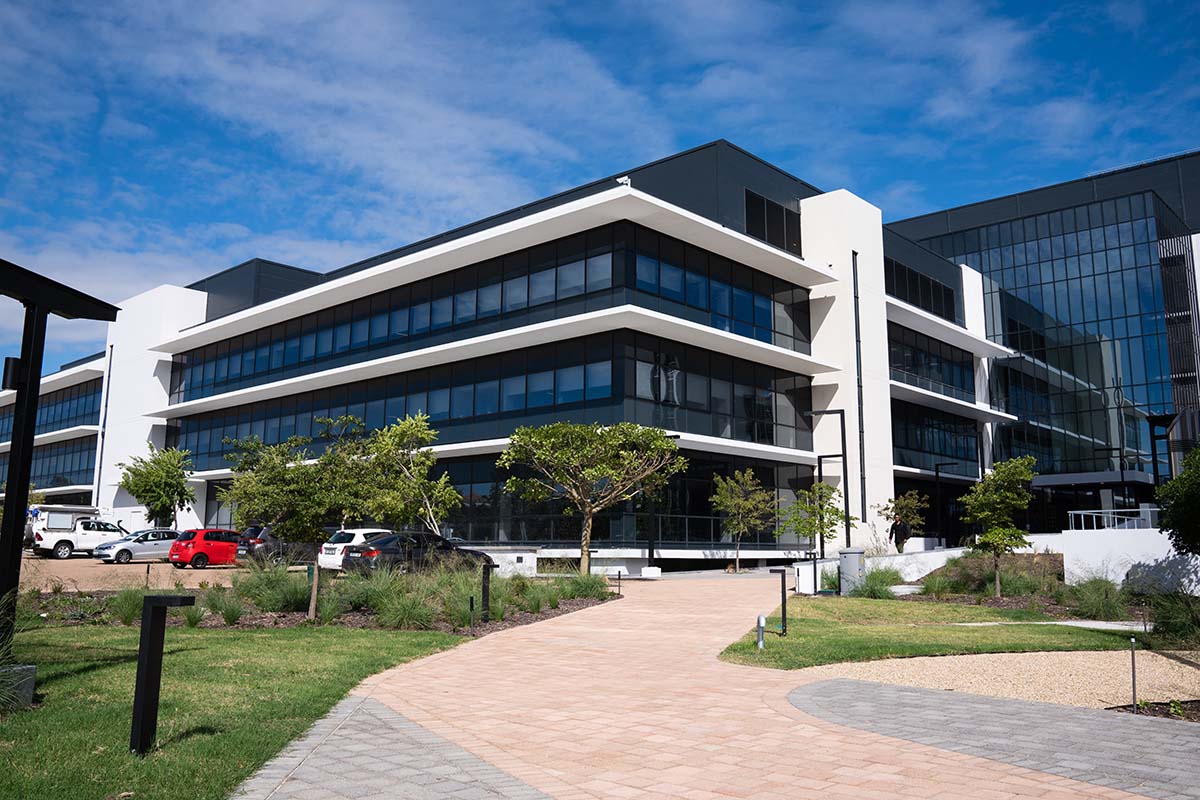
SU's new Biomedical Research Institute is the most advanced research facility of its kind on the African continent. | Photo by Damian Schumann
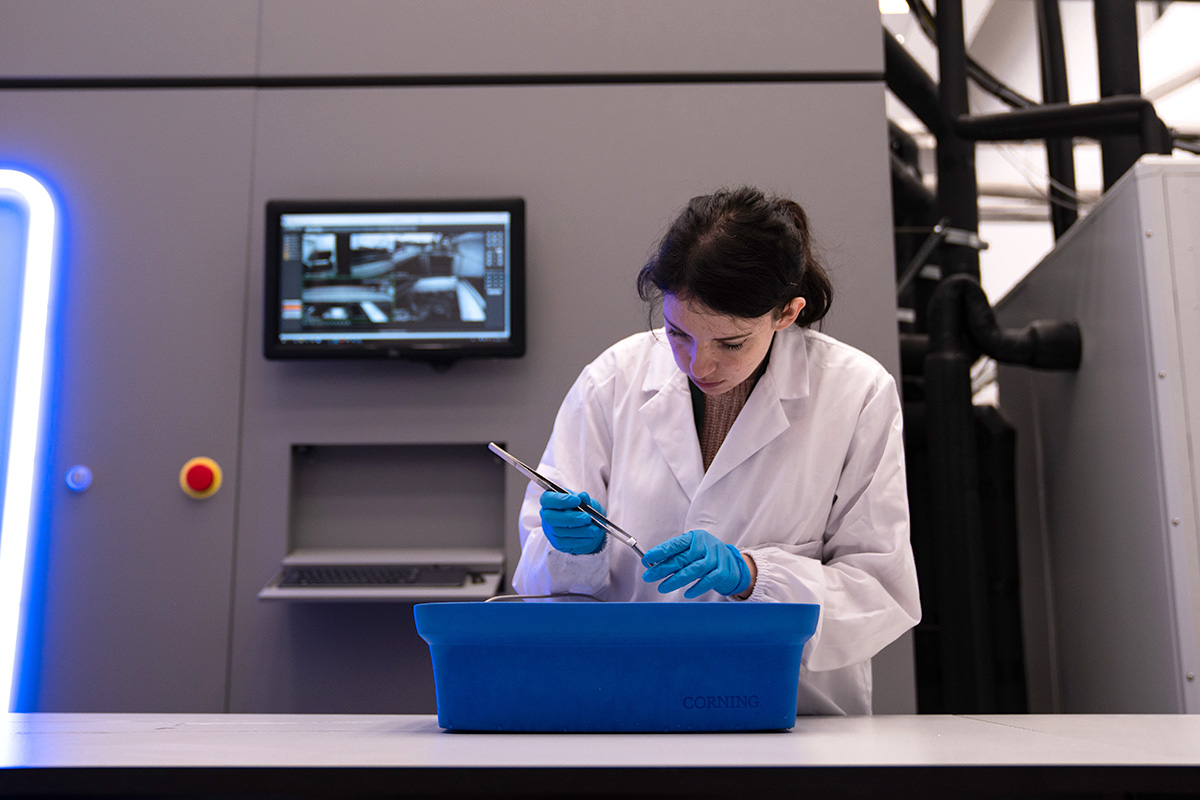
Technical officer Ané Kruger prepares samples to be stored in the Hamilton BiOS. This fully automated biorepository can store up to eight million biomedical samples. | Photo by Damian Schumann

The spacious atrium in the new institute | Photo by Damian Schumann
A world-class biomedical research facility
In April 2023, the launch of the BMRI ushered in a new era for health research innovation and infrastructure in Africa. This advanced facility is on par with the best in the world and is unparalleled on the continent in terms of its facilities and research capacity. In fact, it is the largest and most sophisticated research complex of its kind in the southern hemisphere.
This world-class facility hosts a gathering of minds that is inspiring both emerging and established scientists in the field of biomedical science.
The research emanating from the BMRI has a decidedly African focus, with its researchers wanting to understand the genetic and biomolecular basis of diseases affecting the people of South Africa, and the rest of the continent.
This facility of R1,2 billion (approximately US$ 66 million) is situated on SU’s Tygerberg Campus in Cape Town. As a key capacity-building site for biomedical research, it hosts more than 500 biomedical researchers, research fellows, and students. Among these are some of the world’s foremost scientists in the fields of bioinformatics, tuberculosis (TB) research, neuroscience, and urology.
The work conducted at the BMRI builds on SU’s commitment to impactful research that considers the natural environment, health, human security, and systems and technologies for the future.
“At the heart of our scientific endeavours is the challenge to be locally relevant and globally competitive,” says Prof Sibusiso Moyo, SU’s Deputy Vice-Chancellor: Research, Innovation, and Postgraduate Studies. The institute is situated in a city with not only one of the world’s highest incidence of infectious diseases such as HIV and TB but also fast-rising levels of non-communicable diseases such as diabetes, cancer, and cardiovascular disease.
“Scientists at the BMRI are conducting research that translates into discoveries that help improve the prevention, diagnosis, and treatment of illnesses affecting the people of South Africa, and the rest of the continent at large,” says Prof Nico Gey van Pittius, Vice Dean: Research and Internationalisation of the FMHS.
Game changer for healthcare in Africa
The BMRI boasts numerous state-of-the-art facilities, including the largest (at 600 m2) biosafety level 3 (BSL-3) laboratory and fully automated biorepository in Africa; lecture and conference theatres equipped with the latest audio-visual technology; and large, modern dissection halls custom-engineered to minimise formaldehyde exposure. The biorepository is a facility that collects, catalogues, and stores samples of biological material for laboratory research.
“The investment in the BMRI will allow for significant human capacity development by offering training to some of the best students from the continent and exposing them to extensive national and international research networks, ultimately resulting in a next generation of successful scientists,” says Prof Elmi Muller, the dean of the FMHS.
“The BMRI will be a game changer for healthcare in Africa and is true evidence of using breakthrough science to improve lives.”
The value of the BMRI was recognised even before its completion in 2023. High-profile visitors, including South African President Cyril Ramaphosa and some from the World Health Organization (WHO), came to view the facility in 2022.
Its potential was further endorsed when the WHO selected SU’s Centre for Epidemic Response and Innovation (CERI), located in the BMRI, as a partner-member of their first COVID-19 mRNA vaccine technology transfer hub. CERI is one of only two specialised genomic facilities in Africa, the other being the African Centre of Excellence for Genomics of Infectious Diseases (ACEGID) at Redeemer’s University in Nigeria.
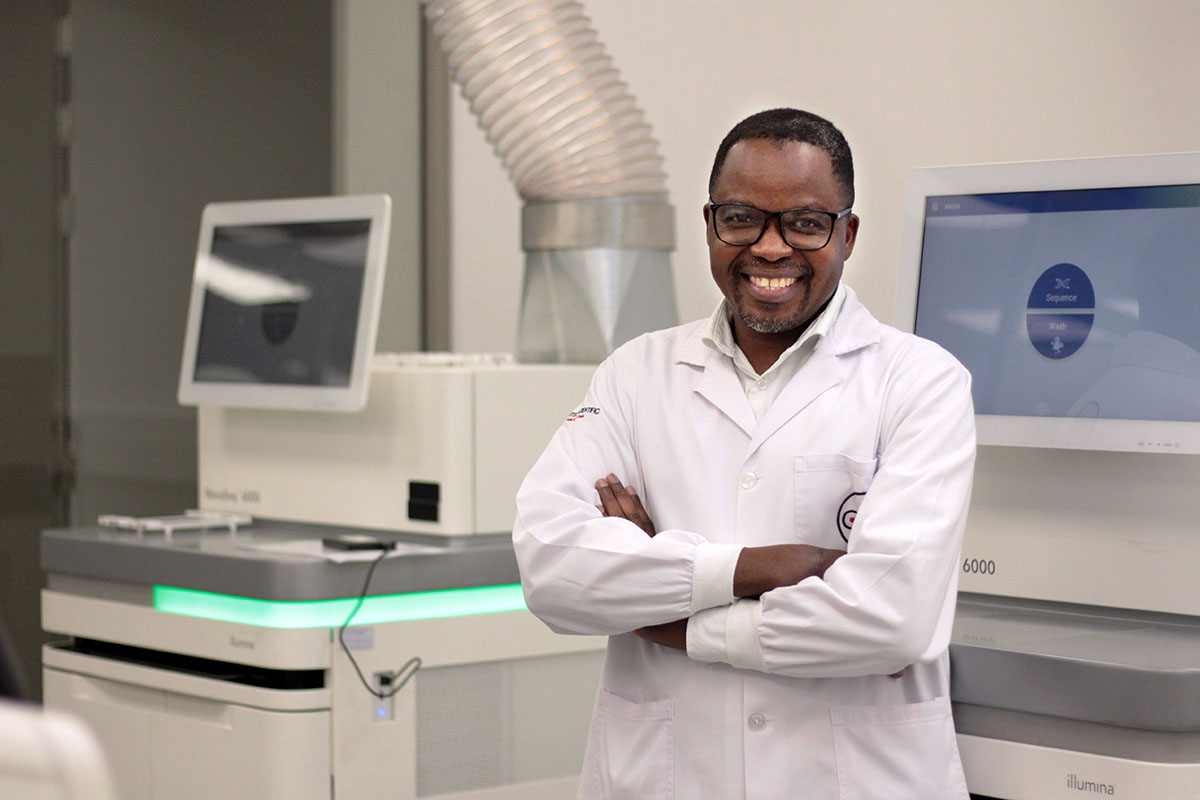
Lucious Chabuka, a laboratory technologist, is one of the researchers benefitting from the innovative teaching offered by the BMRI. | Photo by Wilma Stassen
Preparing the region for the next epidemic
The BMRI is already attracting a cohort of emerging researchers and postgraduate students from across the continent who are making discoveries and bringing attention to crucial issues.
Lucious Chabuka, a laboratory technologist, is one of them, working relentlessly to finish his master’s degree in molecular biology and human genetics. This native Malawian, a father of two, is eager to return to his family in Lilongwe. But his research, which considers the epidemic preparedness of eight countries in sub-Saharan Africa, will be vital for the health and safety of people in the region, if and when the next epidemic strikes.
“Africa is a breeding ground for many diseases, and African countries must be on guard and ready for any outbreak,” he says. “These countries need the right equipment and skills to detect, track, and understand the [relevant] pathogen if public health officials are to make informed decisions for their countries,” he says.
Chabuka has long been fascinated by molecular epidemiology. This field of study is concerned with how often and why diseases occur in different groups of people. The results are used for devising and evaluating strategies to prevent illness and to guide the management of patients already affected. “I have always been intrigued by the causative agents of disease,” he says. “As a medical doctor, you see and treat patients, but in the lab, you get to work with the actual cause of the disease — the pathogen.”
In 2020, Chabuka was a part of the laboratory team that detected the first case of COVID-19 in Malawi. He crossed paths with Prof Tulio de Oliveira, the director of CERI, when he was sent to South Africa to learn how to sequence SARS-CoV-2, the virus that causes COVID-19. De Oliveira is renowned for first detecting the Beta variant of SARS-CoV-2 in 2020, and then the Omicron variant a year later.
This encounter with De Oliveira crystallised a new path for Chabuka. He had been exploring opportunities to further his education, and during his training in South Africa, realised that his future lay in molecular biology with the CERI team. In 2022, he started his master’s degree in the Division of Molecular Biology and Human Genetics at SU. He aims to graduate by the end of 2023.
For the purpose of his degree, Chabuka is investigating how SARS-CoV-2 travelled between Malawi and seven of its neighbours (South Africa, Zambia, Kenya, Tanzania, Zimbabwe, Botswana, and Mozambique) during the pandemic. “I am using both epidemiological and bioinformatics data to try and understand how the virus moved in and around Malawi,” he explains. “I’m looking at the number of infections and deaths, and the countries’ capabilities to detect and track the virus, among other things.
“In this region, people constantly move from one country to another. I wanted to decipher where Malawi’s cases came from. The preliminary results show that most can be traced to South Africa, as many Malawians migrate back and forth between these two countries.”
Like South Africa, Malawi also experienced waves of the pandemic, fuelled by different variants. As such, he is also sequencing the variants found in Malawi for clues of their origin.
But understanding how the virus moved between these eight countries is only one part of Chabuka’s research. The next phase is to determine each country’s expertise and resources, and to identify the gaps that make the region vulnerable.
“My end goal is to provide feedback on these matters to all the countries in the region. We may face another pandemic in the future and must be prepared with the necessary infrastructure to detect and trace viruses.”
Over the past year, Malawi has been battling one of the worst cholera outbreaks in decades. Health authorities in the region have been keeping a close eye on the unabating epidemic. Curious to understand the origin of this outbreak, De Oliveira and Chabuka enquired as to whether the pathogen had been sequenced. They found out that although Malawi has sequencing equipment, the cholera pathogen had not yet been sequenced due to a lack of technical expertise in the sequencing process.
Chabuka was sent to Malawi with the required reagents to sequence the cholera bacterium and to train Malawian laboratory technologists to do so with their own equipment. “After sequencing, we did the data analysis and tracked the specific cholera variant back to Pakistan,” he says, “there being many immigrants from Pakistan and Asia coming to do business in Malawi.”
Chabuka hopes to continue this work through means of doctoral studies, and to eventually return to Malawi with added knowledge and expertise. “Malawi stands out among low-income countries in its pursuit of real-time public health-related research. I feel incredibly fortunate to have had the opportunity to study at the BMRI. My time here has exposed me to cutting-edge equipment and brilliant scientists, providing me with invaluable experience.
“Upon completion of my studies, my heartfelt intention is to return to Malawi and contribute to my homeland with the knowledge and connections for scientific collaboration I have acquired. I am determined to apply for grants to enhance laboratory infrastructure and research capabilities in my country. My goal is to make a positive impact on public health in Malawi and the entire sub-Saharan region through innovative research endeavours.”
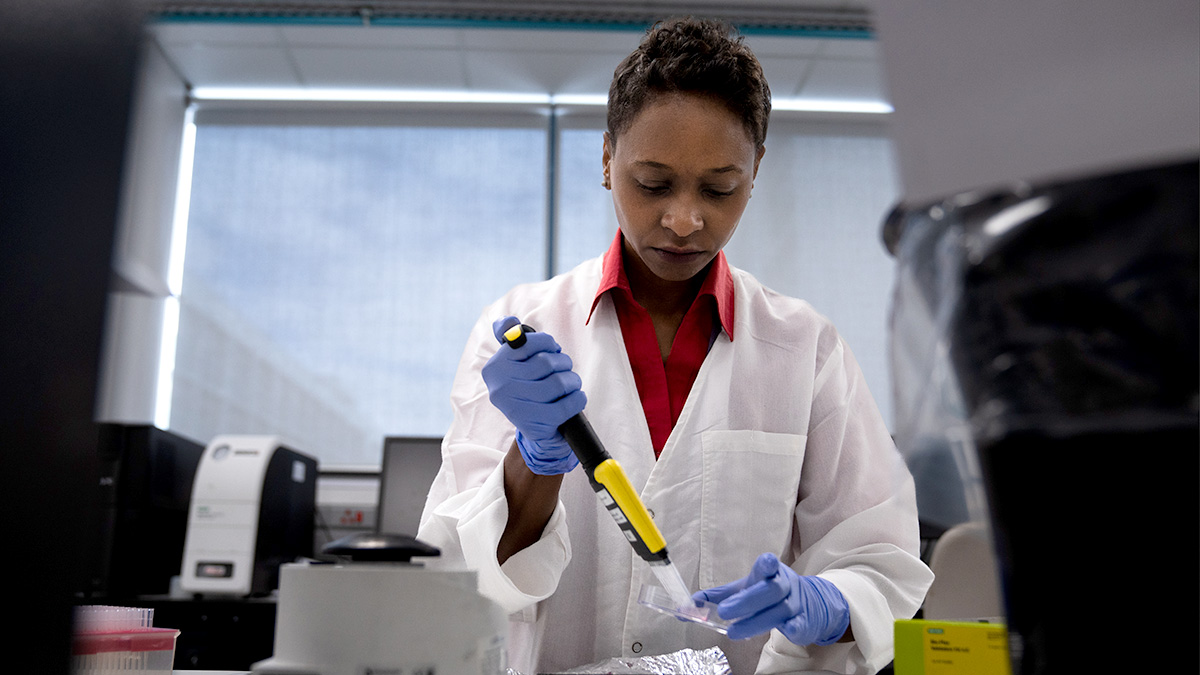
Medical technologist Candice Snyders preparing samples for analysis on the LUMINEX platform | Photo by Damian Schumann
A love affair with science
“I am deeply in love with translational science — converting what we are doing in the lab into clinical use,” says Ewura-Esi Manful, who is completing her master’s degree in molecular biology at SU. The language she uses to describe her research reads like a love letter: “I am fascinated by things on a molecular level and would love to combine both medicine and research. I am also passionate about infectious diseases.”
Manful hails from Ghana, where she completed her undergraduate and honours degrees in biochemistry. The topic for her master’s research — antimicrobial resistance (a pathogen’s ability to defeat the medicine designed to kill it) — springs from a conundrum experienced during her childhood in the town of Sekondi in western Ghana, where malaria is endemic.
Every year, hundreds of millions of people are infected by this disease, and more than half a million people die, most of them in Africa.
“I have always been curious about why I had to take different medication every time I got malaria, even if I got it twice in the same year,” she says. “The pathogens have become wise. They learn how to escape the body’s defence mechanisms and fight off the current drugs. I found this disturbing, so I decided to see how I can contribute to this field.”
With her research, she aims to tackle antimicrobial resistance in TB patients. To do so, she is investigating genes that can help a patient’s immune system fight the disease. “All the existing drugs we have target the pathogen, which is becoming increasingly resistant to these drugs. As such, researchers are shifting their focus to the possibility of modulating the host [i.e., patient] response by targeting certain genes that can improve the host’s defence against Mycobacterium tuberculosis,” she explains.
With the South African Medical Research Council’s (SAMRC’s) Centre for Tuberculosis Research and the DSI/NRF Centre of Excellence for Biomedical Tuberculosis Research situated within her division at the BMRI, Manful is well-placed to explore this topic. “I chose Stellenbosch [University] because of its state-of-the-art facilities and also the high-calibre supervisors and mentors here.” To her point, researchers in the FMHS are playing a leading role in finding solutions for the global TB disease burden.
Manful aims to graduate in March 2024. She will then take the next step in her love affair with science — either a PhD in molecular biology or a medical degree (MBChB) — which she believes will position her well to fulfil her ultimate goal of taking science from the lab to patients in the clinic.
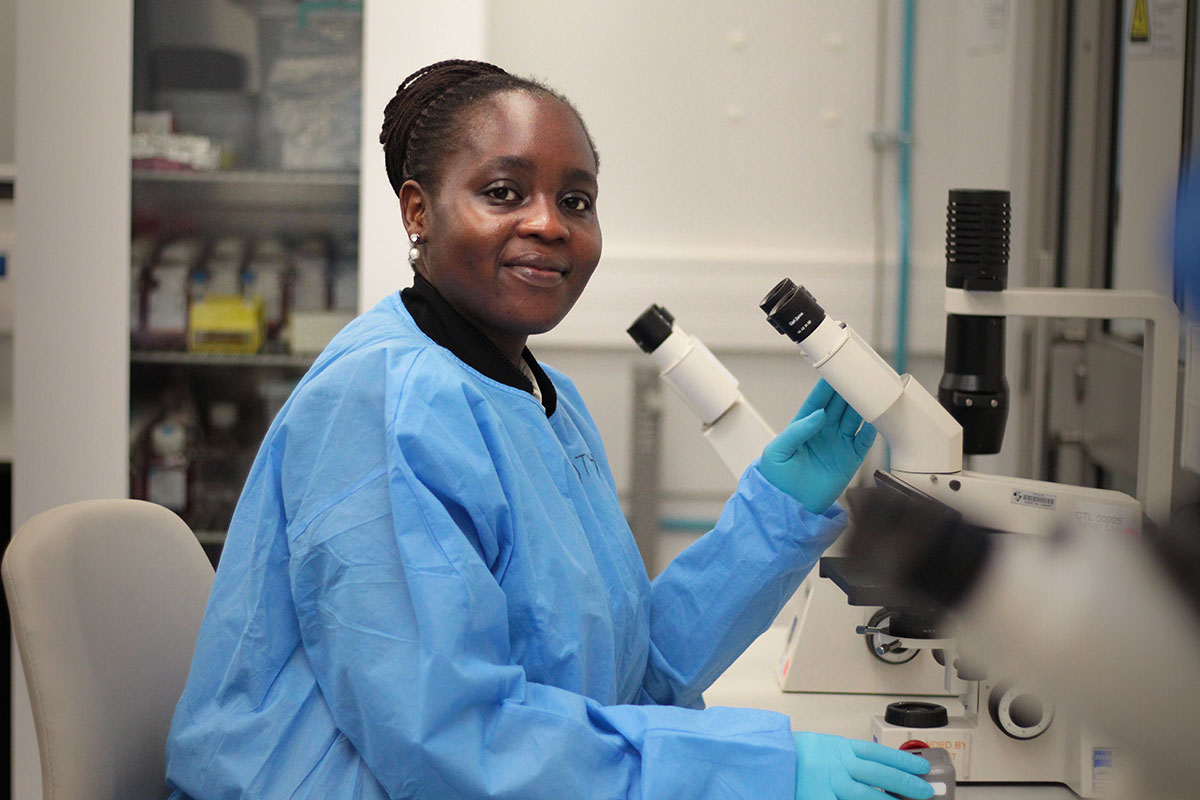
Dr Doty Ojwach at work in one of the laboratories | Photo by Wilma Stassen
Biology enthusiast with a heart for women and children
Dr Doty Ojwach’s enthusiasm for all things biology is second to only one other, namely her dedication to alleviating the burden of disease in Africa’s women and children.
This astute young researcher has combined her two passions in an already impressive scientific career during which she has tackled some of the continent’s most pressing health problems, including HIV and malaria. As a postdoctoral fellow in the Reproductive Immunology Research Consortium in Africa (RIRCA) laboratory based in the BMRI, Ojwach is now setting her sights on a new target: the foetal-maternal interface in the context of HIV.
Ojwach grew up in the Kenyan capital of Nairobi, where she stood out as an academic achiever from a young age. Her introduction to biology at high school lit a spark in her that still burns brightly today. “The moment I got to high school, I became fascinated with biology. When we got to selecting courses, I selected everything to do with the subject,” she says with palpable excitement.
After completing her undergraduate and honours degrees in biomedical sciences at Maseno University in Kenya, she worked as a research assistant at the Kenya Medical Research Institute. She worked on project investigating HIV and malaria co-infection in women and children. Ojwach later relocated to South Africa, where she completed her master’s and PhD degrees in virology at the University of KwaZulu-Natal in 2019. Currently at RIRCA, Ojwach is funded by an African Research Excellence Fellowship (AREF), the SAMRC’s Self-initiated Research Grants Programme, and the National Research Foundation.
In her current work, she studies the placentas of pregnant women to look for clues as to why preterm births are more common among women living with HIV than among those without. “Pregnancies complicated by virus infections, such as HIV, are associated with pregnancy loss, preterm births, and developmental issues in the babies,” explains Ojwach. “My study examines why the placentas are not coping for nine months. I’m trying to figure out if it has to do with the mothers’ immune cells or maybe with antiretroviral therapy. Because that is what’s different in women living with HIV, compared to those living without it.”
Under the AREF fellowship, which enabled Ojwach to visit the universities of Surrey and Oxford, she characterised macrophages (large white blood cells in the immune system that destroy bacteria and other harmful substances) under renowned experts in macrophage immunology. “We subsequently hypothesise that viral infections activate placental macrophages, [inadvertently] leading to adverse outcomes,” she says.
Ojwach is one of only 20 women worldwide to be selected for the 2023 Falling Walls Female Science Talents Intensive Track, which helps early-career female scientists pursue their career paths and supports them in building an international network of collaborators.
It is no accident that her career has led her onto a path that studies viruses and their interaction with immune cells within the placenta. “The placenta is a fascinating research topic. Placental cells contain so much information. It is just amazing. This is the missing puzzle piece between women and their children,” she says.
Her benevolence for these population groups traces back to her childhood in Kenya. “Malaria is rife in Kenya, and it was heartbreaking to see children suffer and succumb to the disease. And on top of that, there is HIV, which is rife among young girls,” says Ojwach. “Women and children have always borne the brunt of infectious diseases. I feel compelled to try and contribute to the science studying these diseases, and to improve research engagement and uptake in our communities.”
She cannot say for certain where her career path will lead her next, but it will be on a trajectory towards doing her own excellent research and empowering other African researchers, especially women. “For now, I’m enjoying academia. I enjoy learning and training others.”
The above three personal stories illustrate how the BMRI is equipping African researchers with the necessary knowledge and expertise to be future leaders in their field; to form equitable, international research collaborations; and, ultimately, to help define the continent’s health agenda and research priorities.
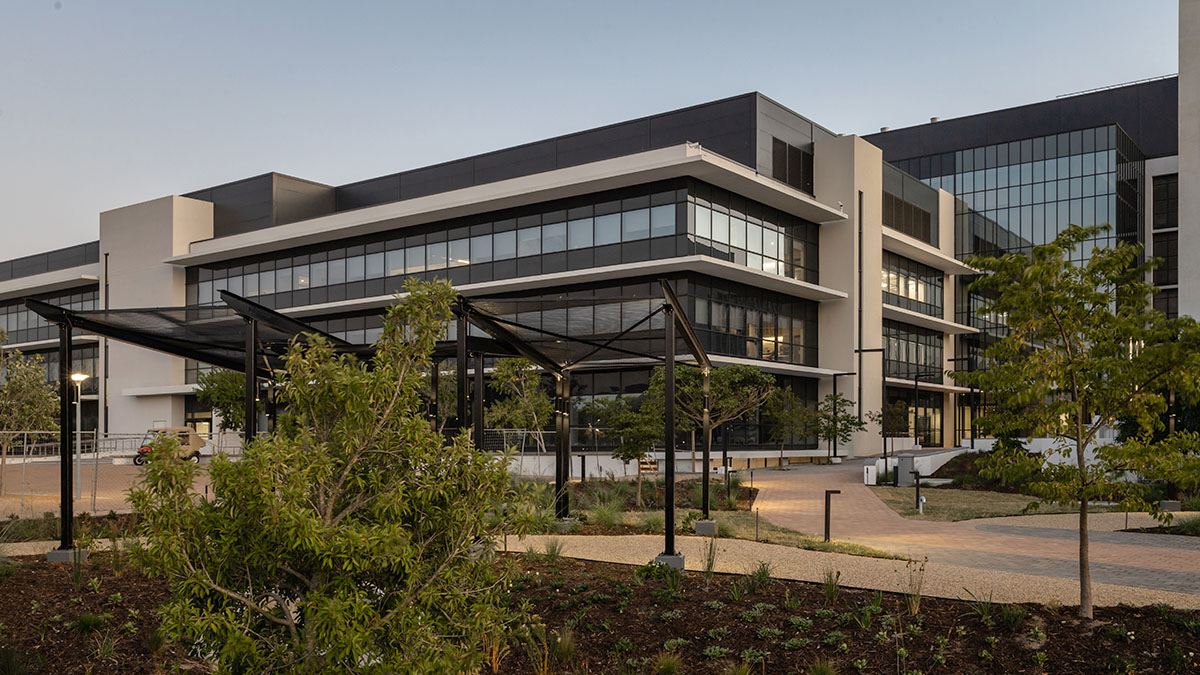
The facade of the new institute | Photo by Damian Schumann
More about the BMRI
- The BMRI is the largest and most sophisticated research complex of its kind on the African continent and in the southern hemisphere.
- Apart from many other types of laboratories, theatres, and dissection halls, the institute also hosts a bioinformatics hub, electron microscopy laboratories, proteomics and flow cytometry services laboratories, a medical morphological learning centre, clinical research facilities, and the Sunskill Laboratory (a simulated operating theatre environment built specifically for training purposes).
- At 600 m2, the BMRI hosts the largest biosafety level 3 (BSL-3) laboratory facilities on the African continent. This type of laboratory, designed to be easily decontaminated, is used to study infectious agents or toxins that may be transmitted through the air, causing potentially lethal infections.
- A system of negative air pressure keeps hazardous fumes and airborne toxins from flowing out of laboratories into adjacent areas. A ventilation and filtration plant continuously draws air out of laboratories towards the top of the building, where it is filtered and released.
- The BMRI was awarded a four-star rating by the Green Building Council of South Africa, which indicates that best practices were followed in its construction. The institute boasts advanced energy recovery technology fitted to the air system, which reduces the building’s carbon footprint compared to similar structures.

The research initiatives reported on above are geared towards addressing the United Nations’ Sustainable Development Goals numbers 3 and 9, and goal number 1 and 3 of the African Union’s Agenda 2063.
Useful links
In-depth: What it means to build genomics capacity in Africa
Stellenbosch University unveils R1.2-billion investment in biomedical science for Africa
Infectious diseases science in Africa takes a leading place in the world
How Africa could protect the world from new pathogens
Africa’s most sophisticated biomedical research centre opens in South Africa
Virus hunters search for diseases supercharged by climate change
Twitter: @MatiesResearch: @StellenboschUni and @SUhealthsci